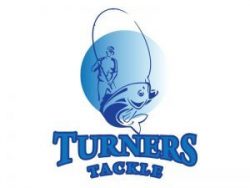A Culinary Odyssey: Top 10 Most Eaten Edible Seaweeds Along the UK Coast
The shores of the United Kingdom harbor a wealth of edible seaweeds, contributing not only to the rich biodiversity of the coastal ecosystems but also gracing the tables of adventurous food enthusiasts. From the shores of Scotland to the southern coast of England, a diverse array of seaweeds finds its way into traditional and contemporary cuisine. In this article, we’ll embark on a culinary journey to explore the top 10 most eaten types of edible seaweed found along the UK coast.
1. Dulse (Palmaria palmata):
- Description: Dulse is recognized by its vibrant reddish-purple fronds with a distinctive crinkled texture.
- Flavor Profile: Sweet and smoky.
- Culinary Uses: Eaten dried as a crunchy snack, added to salads, soups, and stir-fries.
2. Nori (Porphyra spp.):
- Description: Nori presents flat, dark-green or blackish fronds with a smooth texture.
- Flavor Profile: Mild and slightly sweet with subtle umami.
- Culinary Uses: Wrapping sushi, garnishing soups and salads, or crumbled as a seasoning.
3. Sea Lettuce (Ulva spp.):
- Description: Sea Lettuce consists of bright green, lettuce-like clusters.
- Flavor Profile: Mild and slightly sweet.
- Culinary Uses: Salads, wraps, soups, and stews. Often used as a garnish for seafood dishes.
4. Kelp (Laminaria spp.):
- Description: Kelp is characterized by large brown algae with long, ribbon-like fronds.
- Flavor Profile: Savory and rich in umami.
- Culinary Uses: Kelp noodles, broths, stocks, and pickling. Also used in fermenting.
5. Carrageen Moss (Chondrus crispus):
- Description: Carrageen Moss has branching fronds with a ruffled fan-like structure.
- Flavor Profile: Neutral.
- Culinary Uses: Desserts as a natural thickener, soups, stews, and the traditional Irish moss drink.
6. Laver (Porphyra umbilicalis):
- Description: Laver exhibits dark purple or blackish fronds with a delicate, paper-like texture.
- Flavor Profile: Rich and savory with mineral hints.
- Culinary Uses: Traditional Welsh delicacy (Laverbread) in savory dishes, rolls, wraps, and dried and powdered as a seasoning.
7. Bladderwrack (Fucus spp.):
- Description: Bladderwrack has olive-green fronds with air-filled bladders.
- Flavor Profile: Salty and briny with mild iodine notes.
- Culinary Uses: Soups and broths, infusions and teas, and powdered as a seasoning.
8. Channelled Wrack (Pelvetia canaliculata):
- Description: Channelled Wrack has distinctive, flattened fronds with channels along their length.
- Flavor Profile: Salty and earthy.
- Culinary Uses: Soups, stews, and salads.
9. Spiral Wrack (Fucus spiralis):
- Description: Spiral Wrack features spiral-shaped fronds with a distinctive appearance.
- Flavor Profile: Salty and mildly sweet.
- Culinary Uses: Soups, stews, salads, and as a seasoning.
10. Pepper Dulse (Osmundea spp.):
- Description: Pepper Dulse is a small, reddish-brown seaweed with a peppery taste.
- Flavor Profile: Spicy and peppery.
- Culinary Uses: Eaten fresh in salads, used as a seasoning, or incorporated into seafood dishes.
Safety Considerations:
While exploring the culinary delights of edible seaweed along the UK coast, it is essential to practice responsible foraging and adhere to proper identification guidelines. Always harvest from clean waters, avoid areas with pollution, and respect local regulations to ensure sustainable practices.
Conclusion:
From the sweet smokiness of dulse to the umami richness of kelp, edible seaweeds along the UK coast offer a tantalizing array of flavors and textures. Whether used in traditional dishes or incorporated into contemporary cuisine, these marine treasures showcase the diversity and culinary potential of the coastal ecosystems. As you embark on your culinary adventure with edible seaweeds, savor the unique tastes and nutritional benefits that these coastal delights bring to your plate.

